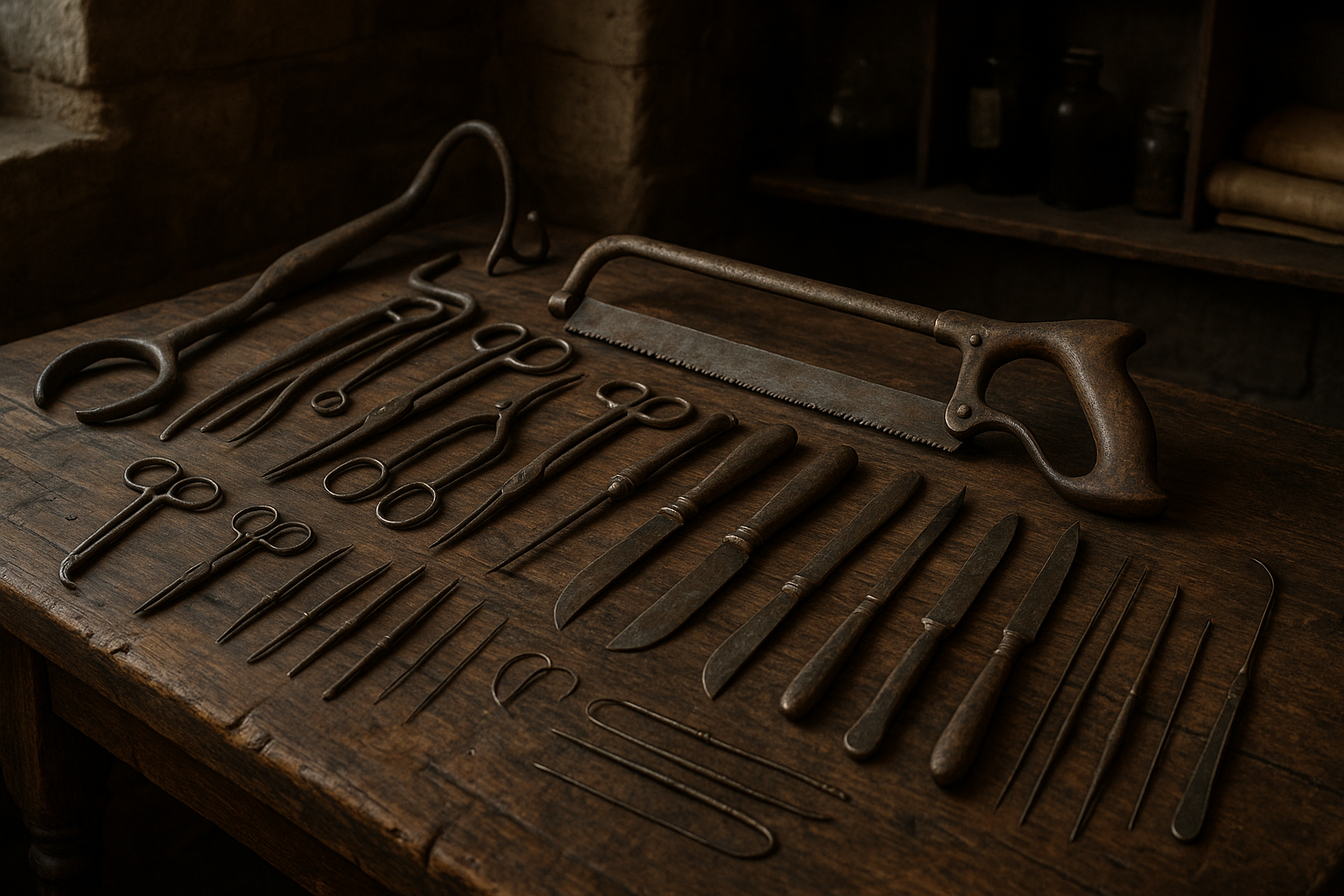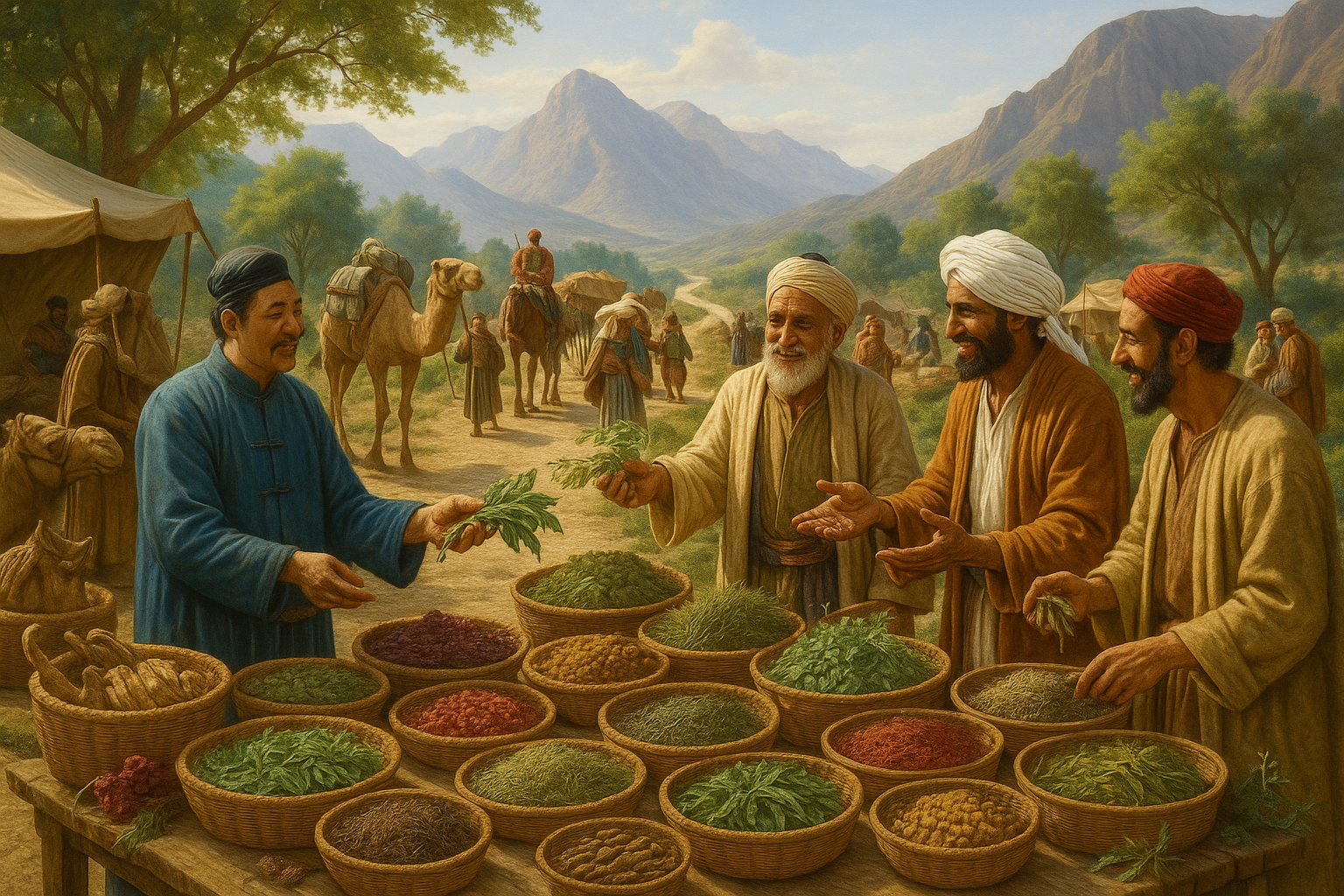Imagine stepping into a time machine 🚀, journeying back to an era where the boundaries of medicine were being explored with a fervent curiosity and an audacious spirit. Ancient civilizations, from the Egyptians to the Greeks and Romans, possessed a profound understanding of the human body and a surprising sophistication in their medical practices. As you embark on this exploration of historical surgery, prepare to uncover the astonishing tools and techniques that were the precursors to modern medicine.
Our fascination with the past often stems from the extraordinary ingenuity that our ancestors demonstrated in their attempts to heal and mend the human body. The ancient world was a crucible of innovation, where necessity and curiosity drove the development of surgical instruments and methodologies. These early surgeons, though lacking the technological advancements we take for granted today, laid the groundwork for contemporary surgical practices.
Delving into the archives of history, we uncover a treasure trove of medical instruments crafted with meticulous precision. The scalpels, forceps, and trephines used by ancient surgeons may seem rudimentary compared to today’s stainless steel counterparts, yet they were ingeniously designed to perform complex procedures. Imagine a Roman surgeon wielding a bronze scalpel, its blade honed to a fine edge, or an Egyptian practitioner employing forceps to deftly extract foreign objects. These tools were not merely functional; they were a testament to the craftsmanship and medical knowledge of their time.
But it wasn’t just the tools that were remarkable. The techniques employed by these early medical pioneers were equally groundbreaking. Ancient texts, such as the Edwin Smith Papyrus and the writings of Hippocrates and Galen, reveal a deep understanding of anatomy and surgical procedures. These documents highlight the evolution of surgical techniques, from basic wound care to more complex operations like trephination—an ancient form of cranial surgery. Such procedures demonstrate a level of sophistication and courage that continues to inspire awe in modern-day surgeons.
Throughout this article, we will embark on a detailed exploration of the tools and techniques that defined ancient surgery. We will examine the materials and methods used in crafting these early instruments, from the metals and alloys favored by Roman surgeons to the natural materials preferred by their Egyptian counterparts. Our journey will also delve into the specific techniques employed by ancient surgeons, exploring how they approached various medical challenges and what these methods reveal about their understanding of the human body.
Moreover, this exploration will shed light on the cultural and historical contexts that influenced the development of surgical practices in different civilizations. From the healing temples of ancient Greece to the medical schools of Alexandria, each culture contributed uniquely to the advancement of surgical knowledge. By understanding these historical contexts, we gain a deeper appreciation for the diversity and complexity of ancient medical practices.
As we peel back the layers of time, we will also address the ethical considerations and societal views that shaped ancient surgery. How did these early practitioners balance the risks and rewards of surgical intervention? What were the prevailing attitudes towards pain management and patient care? These questions are crucial in understanding the broader implications of surgery in the ancient world.
Finally, we will draw connections between past and present, highlighting how the legacy of ancient surgeons continues to influence modern medical practices. Many of the principles and techniques developed thousands of years ago remain relevant today, underscoring the timeless nature of surgical innovation.
So, join us as we embark on this captivating journey through time, uncovering the remarkable legacy of the ancient surgeon’s arsenal. This exploration promises not only to inform but also to inspire, revealing the enduring spirit of human innovation in the face of adversity. Let’s dive into the annals of history and discover the tools and techniques that paved the way for modern medicine. 🏺🔍

Conclusion
Throughout our exploration of the ancient surgeon’s arsenal, we’ve journeyed through a remarkable history that highlights the ingenuity and adaptability of early medical practitioners. From the rudimentary yet effective tools fashioned from natural materials to the pioneering techniques that laid the groundwork for modern surgery, the evolution of surgical practices is a testament to human resilience and creativity. 🏺
One of the key points we’ve uncovered is the significance of ancient surgical instruments. These tools, often crafted from bronze, iron, or even sharp stones, were not merely rudimentary but rather sophisticated for their time. They reveal much about the cultural and technological advancements of ancient civilizations, such as the Egyptians, Greeks, and Romans. These societies understood the importance of precision and cleanliness, which are principles that continue to guide surgeons today.
Moreover, the techniques employed by ancient surgeons were groundbreaking. From trepanation to amputations and the use of herbal anesthetics, these methods demonstrate a profound understanding of the human body and a commitment to healing. These practices were often informed by the medical texts of the era, such as the works of Hippocrates and Galen, which have been instrumental in shaping medical knowledge. 📚
Another critical aspect we discussed is the role of surgery in the broader context of ancient healthcare systems. Surgery was not an isolated practice but part of a holistic approach to medicine, where diet, exercise, and herbal remedies played crucial roles. This integrated approach is something modern medicine continues to aspire towards, emphasizing the importance of considering the whole patient rather than just the ailment.
The cultural context of ancient surgery also cannot be overlooked. In many societies, surgeons were not just medical practitioners but also revered figures who often served as priests or held other significant social roles. This dual responsibility underscores the deep trust and respect afforded to those who practiced medicine, a sentiment that persists in the patient-doctor relationships of today.
As we conclude, it’s clear that the legacy of ancient surgeons is profound and enduring. Their innovations laid the groundwork for the incredible advancements we witness in today’s medical field. This exploration not only deepens our appreciation for the past but also inspires a continued quest for knowledge and improvement in the future of medicine. 🔬
We invite you to reflect on the incredible journey of surgical practices throughout history and consider how these ancient techniques and tools have shaped modern medicine. Your thoughts and perspectives are invaluable, and we encourage you to share them in the comments below. Feel free to share this article with friends or colleagues who might be fascinated by the historical roots of surgery. Together, let’s continue to celebrate and learn from the remarkable achievements of our ancestors.
For those interested in delving deeper into this topic, numerous resources are available that offer further insights into ancient medical practices. Here are some suggested readings and resources:
- The British Museum – A treasure trove of ancient artifacts and history.
- PubMed Central (PMC) – Access to research articles on historical medical practices.
- ScienceDirect – Explore scholarly articles on the evolution of medical techniques.
Thank you for joining us on this enlightening journey through time. We hope it has sparked a newfound appreciation for the ancient pioneers of surgery and inspired a curiosity to explore more about the incredible history of medicine. 🌟
This conclusion synthesizes the main points of your article, emphasizes the importance of the topic, and encourages reader engagement through comments and shares. It also provides a list of resources for further reading, enhancing the educational value of the piece.
Toni Santos is a researcher and practitioner specializing in the study of ancestral healing systems, energetic frameworks of the body, ancient herbal traditions, and sacred operative procedures. Through an interdisciplinary and historically-rooted lens, Toni investigates how humanity has preserved and transmitted knowledge of preventive health, subtle anatomy, plant medicine, and ritual intervention — across cultures, lineages, and sacred traditions. His work is grounded in a fascination with healing not only as physical remedy, but as carriers of hidden wisdom. From ancestral preventive health practices to energetic healing maps and ritual operative techniques, Toni uncovers the visual and symbolic tools through which cultures preserved their relationship with the body, spirit, and plant world. With a background in ethnomedical history and comparative anatomy systems, Toni blends archival research with practical study to reveal how ancient societies used plants, energy, and ceremony to shape health, transmit wisdom, and encode sacred knowledge. As the creative mind behind jirenx.com, Toni curates illustrated frameworks, historical case studies, and symbolic interpretations that revive the deep cultural ties between ancestral medicine, energetic healing, and sacred procedure. His work is a tribute to: The lost healing wisdom of Ancestral Preventive Health Practices The guarded rituals of Energetic Anatomy and Healing Maps The ancient knowledge of Herbal Pharmacology of Antiquity The layered sacred practice of Ritual Surgery and Sacred Operations Whether you're a traditional medicine scholar, energetic healer, or curious seeker of ancestral health wisdom, Toni invites you to explore the hidden roots of sacred medicine — one practice, one map, one ritual at a time.




